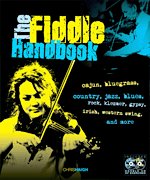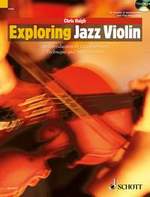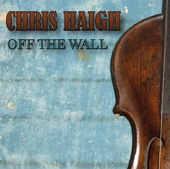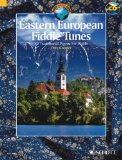
MENU TO FIDDLE STYLES:
............................
Hungarian and gypsy Fiddle
LEARN MORE ON THE FIDDLE CHANNEL!
The Early history of Gypsy violin
The gypsies had been around in Hungary since the 15thC, when the King had given them freedom of movement in 1423. The 17thC saw the departure of the Turks and the opening up of the country to western and church influences- particularly important for introducing the concept of harmony. For native Hungarian village musicians the Reformation of the church, as in many parts of western Europe, saw a hardening of attitudes towards music, dance and general sinful enjoyment. Fiddlers got top billing on the Wanted posters; one preacher in 1681 railed that “I would have all the violins found in every town, in every village, and, cutting them in two, hang them up on willow trees, and the violinists who play the dances would be hung up by their legs beside them!” Ouch. Whilst this threat may have been a considerable deterrence to god-fearing Hungarians, the gypsies, seen by themselves and others as outsiders, would have taken little notice, and they gradually began to replace the natives as providers of musical entertainment. As early as 1683 a Hungarian writer noted that a gypsy fiddler was an essential part of any nobleman's entourage.
The first renowned gypsy violinist and band leader that we know of was Mihaly Barna who in 1737 lead a quartet, backed by second violin, harp and bass. He was also a composer, and is credited with the famous Racokzy Song celebrating the exploits of the early 18th century Hungarian freedom fighter Prince Francis Rakoczi; the two are said to have fought together and been exiled together in Turkey. It soon became fashionable for aristocrats to employ their own gypsy orchestras; they were almost always lead by a violinist (the primas). Already by this time the violin had become the principle instrument in Hungary, largely displacing the bagpipe which had hitherto been a popular dance instrument. The profession of violinist was more often than not passed down through families, and it was not always the son who got the fiddle: Panna Czinka ( 1711-1772) was a grandaughter of Mihaly Barna. By the age of 15 she was leading her own band, dressed in a man's uniform just like the rest of the group. She became famous for both her swarthy beauty and the brilliance of her playing; it was said that her bow "spanned the country from Poland to the Adriatic", and that she "drew sparks from it, making the very stones shiver" with the energy of her playing. Such stories emphasise the close relationship between the romance of gypsy musicians and the patriotoc national fervour of Hungary, but they must be taken with a pinch of salt. Balint Sarosi, author of "Gypsy Music" claims that Panna Czinka's grandfather Mihaly Barna was in fact fictitious, and that Rakoczi had no gypses in his retinue. Who to believe?!
Panna Czinka
From the 1760’s onwards Hungarians experienced a great up-welling of nationalist feeling and it was the gypsy orchestras who were able to capitalize on this, performing sentimental old folk songs as well as composing new ones. Within a short time it seemed there were gypsy musicians everywhere. A new genre of music sprang up to accompany army recruitment drives. Experienced soldiers would travel around the villages and, accompanied by the inevitable gypsy band, perform athletic dances designed to show off their strength and virility. The young men of the village, carried away by the heady mix of patriotic music, alcohol and testosterone, would find themselves signed up for a spell in the army. The new musical style which went with these occasions was called Verbunkos. The tunes included elements from many sources-Hungarian, Turkish, Viennese, but one common feature to all verbunkos tunes is that they start off lassu (slow), and end up friss (fast). This feature is said to represent either the two sides of the Hungarian character (gloomy, carefree) or the two emotions of joining up (the tearful farewell, the excitement of battle). Other musical characteristics included a high degree of ornamentation, use of a type of phrase called a bokazo (representing a clicking of heels), and of the “Hungarian Gypsy Scale” ( a harmonic minor with a raised fourth, giving two spicy augmented second intervals). This was a scale the gypsies brought from Turkey.
The scale is actually fairly rare in the old, rural tunes. Kodály spoke of it with contempt; “Gypsies falsify the folk songs they play by introducing the augmented intervals of this scale, which are never used by peasants”. Bartók was of the same mind: "the so-called Hungarian Scales are entirely unknown to Hungarian peasant music...never do two different augmented seconds appear in one tune".
The interval of a fourth, representing the military signals of a trumpet, is another common motif.
Verbunkos quickly came to be seen as a symbol of romanticism, national rebirth, and all things Hungarian, and was wildly popular with everyone from the peasantry to the aristocracy. During this period Hungarian gypsy ensembles started to perform with great success in other European capitals. It is reported that at one ball they were alternating with a group of German musicians who, seeing the gypsies playing to great applause, entirely by memory for almost two hours, “almost chewed up their music in rage”.
Among the leading writers and performers of verbunkos was the gypsy bandleader, “the Napoleon of the fiddle”, Janos Bihari(1764-1824) He is credited with over 80 compositions in the verbunkos style, including the Rakoczi March, which has subsequently been incorporated into classical works by composers such as Liszt and Berlioz, and is still today played as the traditional ending number for a dance party. Liszt was such an admirer of Bihari that he wrote "like drops of some fiery spirit essence, the notes of this magic violin came to our ears”.
Janos Bihari
Another notable composer and performer was Mark Rozsavolgyi- a virtuoso violinist, He is said to have composed the first czardas, a new slow/fast tune form which grew out of verbunkos, in 1835. The genre of czardas soon became wildly popular and every gypsy band leader was expected to write his own. Like every new pop phenomenon. czardas had its detractors; Sarosi states
It is no wonder then that czardas pieces were made to pattern by the hundred, one more worthless than the other. On the one entitled "The Hungarian Goodwife's Czardas," a critic had the following to say in the 30 April 1862 issue of Zeneszeti Lapok: "If things go on like this, there will be no object, notable person, idea, sentiment, whatever, which would not merit a tune composed by the czardas zealots who apparently set it as their aim in life to 'czardasify' anything they can"
Mark Rozsavolgyi
Rozsavolgyi was also at the forefront of another new musical movement-popular Hungarian song known as Magyar nota. Interestingly, although known as a famous gypsy violinist, he was in fact born Mordchele Rosenthal- he and his entire ensemble were not gypsies but jews. By the end of the 19thC many gypsy violin dynasties had been established in Hungary; Balint Sarosi, author of "Gypsy Music", lists the following; the Berkes's, Berkis, Kóczés, Kozáks, Munczis, Rácz's, Radics's, and Magyaris. Whilst the top musicians achieved great fame and lived in luxury, for the rank and file it could be a hard and competetive business, made all the more so by the fact that few gypsy musicians were prepared to do other work to supplement their income. Territory was fiercely defended, and it is reported in 1892 that when a band moved from Gyula to Arad they were beaten up and run out of town by the resident musicians.
Meanwhile the controversy continued as to what constituted real Hungarian music. It was more than a matter of idle speculation; this was the height of both Hungarian nationalist feeling, and the peak of the Viennese school of classical music. The Hungarian middle class desparately wanted a music of their own at least the equal of their overlords in Austria. The classical violinist Ede Remenye pulled no punches when he had this to say about the contibution of the gypsies:
If we want our national music to be spoken of with respect in educated circles abroad, we must strive, above all, in our homeland to take our fine music out of the hands of the many frothy, chaffy, tastelessly gaudy, dilettantish wild and virtuoso Gypsies, whose style is an affront to a deep sense of beauty, and to elevate it from the stinking morasses of the centuries in which they had sunken and still keep on sinking it through their distorted procedures. Let us stop boasting of it. In other countries music is played in gardens, pubs and in the streets (especially what they call "Garten Musik"), yet no one would think of saying that such catchpenny musical literature was real art.
MAGYAR NOTANota was the equivalent of today’s pop song, defined by Kodaly, somewhat loftily, as being intended for “a transitional type of man: one who had already outgrown folk culture , but had not yet reached a higher cultural level.” The melodies of nota songs owed a lot to western art music, were easily harmonised, and usually came from the outset with piano accompaniment. Whilst verbunkos had often turned songs into instrumentals, nota did the opposite, using established tunes to make songs. Quietly flows the River Maros for example, is a nota based on a czardas originally written by Miska Borzo. One of the first successful gypsy musicians to write nota was Pista Danko (1858-1903). Among his compositions was One Kitten, Two Kittens, (see below), a song so popular in its day that when first introduced by the band at the Hungaria Restaurant in Szeged, they were made to play it continuously for two days. Now that’s a gig I’m glad I missed, though in fact it may not have been as unusual as it sounds; Kodaly referred to "the old style of Hungarian merrymaking, when a single song was played and sung the whole night long".
By now a standard repertoire was becoming established for the urban gypsy ensembles, which has not changed greatly in a century. Many of the nota songs were turned back into instrumentals- usually sweet, sentimental numbers with titles like “my violin is broken”, “A bird sings gaily on the leafy branch”, “my little thatched cottage” and “whom is the swallow mourning?”. Verbunkos and czardas tunes, mostly written by gypsies remained popular, and the works of art music composers including Hungarian themes, such as Brahms’ Hungarian Dances and Liszt’s Hungarian Rhapsody were quickly adopted ( a strange twist indeed; gypsy folk into art music into gypsy folk!) . Light opera extracts such as Lehar’s The Merry Widow, or Kalman’s The Gypsy Princess were often played. The Italian composer Vittorio Monti in 1904 wrote his czardas-it was his only famous composition, but so successful that it is today by far and away the best known czardas. The Romanian composer Dinicu contributed two numbers which quickly became gypsy standards; the hora staccato, and ciocarlia (the lark), famous for its extended section of bird noises played at the very top end of the fiddle.
BARTOK AND KODALY
With the increasing sophistication of the urban repertoire, a wide gulf was beginning to open up between this, and the simpler, more earthy and rustic rural repertoire. Inevitably some intellectuals began to regards the urban repertoire as too slick, schmaltzy and sentimental, and having lost touch with its source, the true music of the Hungarian peasants. Thus it was that, struck by the chance hearing of a nighbour's maid singing the red apple has fallen in the mud, a “genuine peasant folk song” in 1904, composer Bela Bartok developed a fascination for the primitive music of the Hungarian countryside, and began a quest to collect as much of it as he could. “In the so-called cultured urban circles” observed Bartok, “the unbelievably rich treasure of folk music was entirely unknown. No one even suspected that this kind of music existed”. Using an Edison cylinder recording machine, he began in 1906 a series of expeditions, recording and transcribing altogether a staggering total of 10,000 tunes. Many of the tunes were collected in the Hungarian- speaking areas beyond the present borders, such as Transylvania in Romania. Bartok, along with his fellow composer Kodaly, incorporated many of the themes, forms and modalities into his compositions, successfully creating music which was both very modern and at the same time suffused with what was seen as the true spirit of ancient Hungary. They worked in tandem, systematically dividing up between them the regions of the country and other Hungarian-speaking regions for research and study. They also reopened the Liszt controversy, rejecting the idea that gypsy and Hungarian music were inextricably linked. When collecting tunes they always tried to select material which had not been "contaminated" by gypsy influence. To quote Sarosi; " In the eyes of Bartok and Kodaly the grave sin of these professionals--mostly Gypsies since the end of the 18th century--was that they served fashion and the entertainment of those who paid them, intruding--as they saw it--a decadent, worth less, more recent urban repertoire into authentic folk culture." This view was controversial not least because in the past the Hungarian aristocracy had seen themselves, as patrons of the gypsies and their verbunkos and csardas music, as being the essence of the nationalist cause. To suggest that the heart of Hungarian culture lay not with them but with unlettered peasents was a disturbing and dangerously revolutionary idea.
One of the chief differences between "genuine" peasant folksong, and its more modern csardas and magyar nota counterpart is that with the former always had words, whereas the latter could be instrumental. Bartok, in 1947, wrote; "In the folksong, text and music form an indivisible unity. Gypsy performance destroys this unity because it transforms, without exception, the vocal pieces into purely instrumental ones. This alone suffices to prove the lack of authenticity in gypsy renderings of music..."
Zoltan Kodaly
By 1946 revolution was indeed in the air, and the postwar communist takeover led to the inevitable state folk ensembles, but unlike in some Iron Curtain countries, the gypsies were valued for their music; and were allowed to continue working in the city restaurants and hotels. Support was given for special schooling for gypsy children, through the Young Communists League. The most successful, and still thriving, of these enterprises, is the Rajco School in Budapest, founded in 1952 by Gyla Farcas. Today in addition to the school, there is a Rajco Ensemble, a professional performing group made up of its graduates. Also still operating is the Hungarian State Folk Ensemble which, recognising the split between urban and rural music, has two bands which alternate during a show- one playing romantic gypsy music, and the other playing authentic village music. The ensemble was established in 1951 and, unlike many such groups created in communist times, it strove to recreate genuine, authentic traditions of music and dance rather than the "fakelore" which was so prevalent in Soviet times.
The heritage of Janos Bihari is maintained through the dynasty of the Lakatos family; Sandor Lakatos (1924-94) an educated gypsy based in Budapest was a 5th generation descendant of Bihari, and led one of the finest traditional urban gypsy orchestras. Today his nephew Roby Lakatos, born in 1965 brings gypsy music into the 21st century, bringing together a fabulous classical technique, a repertoire including many of the old czardas, a superb clean and modern jazz style, a touch of latin flair, and the best moustache in Eastern Europe.
Roby Lakatos
DANCE HOUSE MOVEMENT
During the 1970’s traditional music entered a new era with a revival known as the Tanchaz or Dance House movement. This was in large part a reaction to a perception among a group of intellectuals that folk music, originally the property and birthright of the Hungarian people, had been appropriated by the state, from which people were feeling increasingly estranged. The music, to all intents and purposes was now being played only by classically trained musicians or by gypsies. When Sandor Timar, choreographer of the Bartok Dance Ensemble, wanted some authentic live music for an avant-garde production, he was not satisfied with either of these alternatives. Instead he turned to the young, long-haired duo of Bela Halmos and Ferenc Sebo who, on a variety of instruments, were prepared to experiment and improvise within a peasant music context. Among the chief inspitations of this duo was Gyorgi Martin (1932-83), a folk dance researcher and collector who was able to prove that odd bar lengths and assymetric structures were an integral element of traditional Hungarian music. Encouraged by the results the duo, along with Timar, established a dance house where young people could come along, listen to Hungarian village music, and learn traditional dances. The idea caught on like wildfire, and soon young people in their droves were scouring the countryside in search of villagers who could teach them authentic tunes or dances. Tanchaz, and bands to play at them, soon sprang up everywhere. The key to this success was that this new approach stressed involvement and ownership of the music by everyone involved; this was no longer something controlled by the state.One of the best known and most influential of the "source" bands is the Bogyiszlo Orchestra from the village of that name on the Danube in southern Hungary. Kis Janos Orsos was the primas violinist in 1983 when Sebo first recorded them for the state Hungaroton label. Among their repertoire are many tunes which predate the vebunkos and czardas repertoires, such as jumping dances or ugros, from the middle ages. Some of these tunes are built on a pentatonic scale, with a simple melody repeating five notes lower. This structure can be traced right back to the origins of the Magyar people in the Turkic lands of Siberia.
tanchaz
The most successful of the new bands was Muzsicas who, since their formation in 1972, have built a solid international reputation for their faithful recreation of authentic village music; following the example of Bartok and Kodaly they went out into the villages to record and learn old tunes and playing techniques. The band consists of Mihaly Sipos and Laszlo Porteleki on violins, Peter Eri on kontra, and Daniel Hamar on bass, along with Marta Sebestyen on vocals. One of their most interesting projects to date is “The Bartok Album”, which presents some of Bartok’s original field recordings alongside his art compositions based on these themes, plus contemporary recordings in traditional village style.
Muzsicas
Here's a fiddler's eye view of a tanchaz:
GYPSIES
The Roma people (gypsies, tziganes, zigeuners…) originated in North Central India and, starting around 300 BC, started travelling, first to North Western India, then to Persia and then, some time in the middle ages, to Europe. They were thought at the time to have come from Egypt, hence the name gypsies. They have always remained on the margins of society, avoiding farming, but making a living in such trades as metalworking, horse-dealing and entertaining. Within the gypsy community, musicians have the highest status. There are different tribes of gypsies; the ones that arrived in Hungary in the 15thC, and who eventually made up the bulk of the professional "restaurant" musicians are the Romungro gypsies. A second group, the Vlach or Olah gypsies arrived from the Romanian region of Wallachia much later, in the 19thC. Until the last few decades this group, more rural in character, had no interest in professional music, and the music they played for themselves was almost entirely vocal and percussive in nature.
The European nobility, particularly in countries like Russia, Rumania and Hungary, have long had a fascination with the romance, mystery and exoticism of these free-wheeling people, and have been willing patrons. In 19thC Hungary most landed gentry would retain their own gypsy orchestra.
There is no such thing as a single gypsy style of music; think of the range covered by Flamenco, the gypsy jazz of Django Reinhardt, the Rumanian hard jazz/rock of Ivo Popozov, the raw village music of Taraf de Haiduks, the smooth schmaltz of the Hungarian gypsy orchestras. There is also style of music played only by gypsies for themselves, largely vocal and percussive and highly improvised.
What is common to all is their great aptitude as musicians, adopting a professional attitude, learning the local repertoire and generally improving on the performance of the natives through virtuosity, improvisation and showmanship. As periodic travellers, gypsies have been an important force in musical cross-pollination; in addition to having command of the local repertoire, they will almost certainly have a wide knowledge of music from other regions and countries, and can introduce techniques and flavours which seem mysterious and exotic.
From a fiddler’s point of view the style of the urban gypsy ensembles of Eastern Europe provides an exciting and challenging approach to playing. It is one of the few areas of folk music where a sound classical technique is a great advantage instead of a disadvantage.Techniques used by the gypsy fiddler
It is a gross oversimplification to attempt to describe a single "gypsy style" of playing; for one thing, to quote Bartok; "the simple rural gypsy plays in a manner entirely different from his urban cousins". The rural style is raw, energetic and lacking in polish in finesse. However, it is the urban, "gypsy orchestra" style with which we in the west are most familiar; a slick, semi-classical style but full of improvisational flourishes. Features include:
1.Use of higher positions, up to the very top of the neck
2.Use of harmonics, either “true” or “false”
3.Pizzicato with the left hand, sometimes simultaneous with bowing
4.Spicatto and detache bowing techniques
5.Wide vibrato, used in a controlled fashion to display emotion
6.Frequent use of double stops and arpeggios to emphasise chords
7.Frequent changes of tempo, shifting gear often from very slow, rubato sections to dizzying speeds.
8.Improvisation using all the above techniques.Gypsies almost never use written music when performing, even if they are able to do so. This was one of the features of their playing which greatly impressed and mystified audiences in London. Paris or Vienna when seeing gypsy bands for the first time in the 18th or 19thC. Gypsies regard it as a barrier between them and the audience. In the words of the Hungarian writer Balint Sarosi, “The printed music assumes the nature of a dividing wall between the musician and listener which would end the feeling of direct contact between them which intensifies the mood and achievement of the musicians while they are playing”
To a gypsy player, the performance, and its effect on the listener, is all-important. Again to quote Sarosi, “it is not his purpose to give faithful interpretation of the piece of music, but with the aid of musical-rhetorical devices to delight the listeners, bringing them to ecstasy, whipping up their emotions.”
"Hungarian Fiddle Tunes; 143 traditional pieces for violin" by Chris Haigh, was published by Schott in Jan 2013. Detailed notes on the tunes in the book can be found here:
LINKS;
CIMBALOM.NL is a wonderful source of thousands ofHungarian tunes- both csardas and magyar nota, presented alphabetically and with audio and midi files.
Return to fiddlingaround.co.uk homepage
Chris Haigh is a London-based fiddle player who specialises in Klezmer, gypsy and East European styles. He plays with a trio, Klezmania, doing lots of Jewish weddings and Bar Mitzvahs; this band does a mixture of traditional Klezmer and Israeli tunes along with some jazz improvisation. Tziganarama is Chris's own trio, playing a wide range of Jewish, Russian, Balkan and gypsy music.
Chris sometimes plays solo or as a duo with accordion, going "around the tables" at a dinner.
He gives workshops on klezmer, gypsy and other east european fiddle styles, demonstrating techniques and ornamentation, describing the different tunes types and scales.
He writes original klezmer melodies; his tune "Klezmania" was used on a worldwide TV ad for Nike!
BY CHRIS HAIGH
Eastern European Fiddle Tunes-80 Traditional Pieces for Violin BK/CD (Schott World Music Series)
Pete Cooper hooks us right from the start, with a folk tale of gypsies, fiddles, and the devil. Fiddling in eastern Europe is more than just a bit of light entertainment; it’s the stuff of history, magic and legend. Cooper immediately banishes the idea that there is a single east European style; it ranges from the virtuosic semi –classical gypsy fiddling to relatively basic and rootsy folk playing. For those nervous of venturing much beyond first position, you’ll be pleased to hear that this book is geared more towards the latter than the former end of the spectrum. MORE...
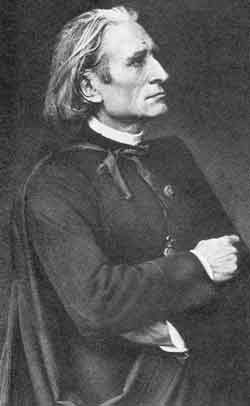
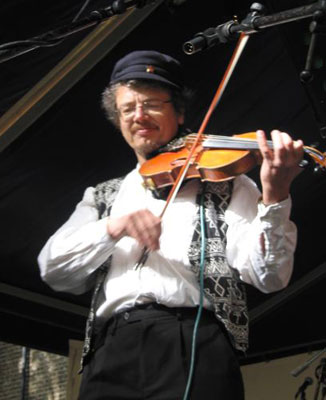
.jpg)
